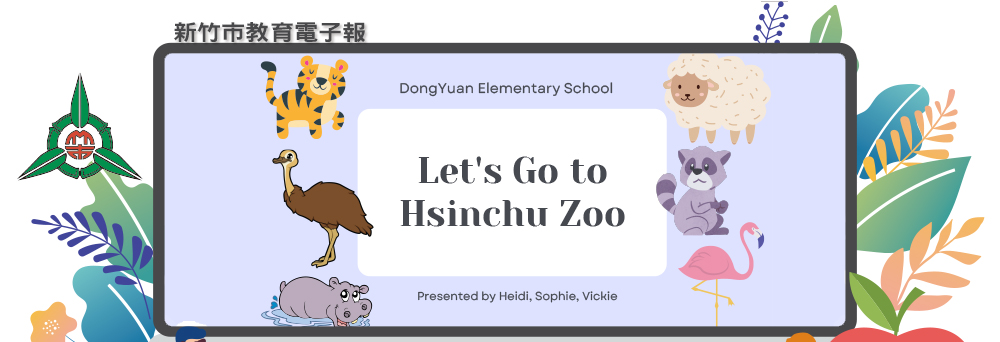

 |
 |
 |
 |
 |
 |
 |
 |
|||||||||
|
《ABSTRACT》
This lesson is going to introduce what we can do if we take students to Hsinchu Zoo and we want to teach them some basic English sentences with mathematical concept. From the ticket office at the entrance of Hsinchu Zoo, we can learn how to read out the number of people who visit the zoo each day. From the signboard at the entrance, we can see the angle of each English letter. When we walk up to the hippo, we know how many kilograms of grass the hippo eats in a week or in one day. What’s more, students know the height difference between themselves and the monkeys.
In addition to having fun in the zoo, students can also gain knowledge on this excursion. But why do we have this idea? How do we plan for it? Let's take a look at the whole story of preparing for teaching from the start.
Before Going into the Zoo This whole year, Sophie, Vickie and I plan, prepare and teach bilingual math for all the third graders in Dongyuan. With the foundation of one period for Bilingual math each week, we challenge to go directly into the real-life environment. We choose the zoo because of the short distance between our school and Hsinchu Zoo. Still, we need to have a lot of discussion and preparation before we go to the zoo. In the first semester of grade 3, we have learned how to say numbers up to 1000, how to solve addition problems, how to do subtraction, multiplication, division, how to say the shapes, how to identify angles, and how to measure the length by centimeter in our bilingual math class. And when we decide to go to the zoo, we also need to review inside the classroom about what we have learned. There is a brief introduction about the topic. First, I give them some pictures and ask them where it is. Students can quickly get the answer from the pictures I give them. And then, we review some shapes from the pictures I just gave them and we can also discuss which animals can you see in the familiar shapes. For examples, students may answer that they can see the triangle in the monkey island. They have seen monkeys playing there. After the shapes, we talk about angles. They have learned right angles, acute angles and obtuse angels. Now they can tell from the letters of HSINCHU ZOO. From the questions and answers, they will find letter “H” has right angles, and letter “N” and “Z” has acute angles.
Next, they will review how to read the number of people entering the zoo every day. And they will also see the price of the ticket. And they will practice how much they will pay if they come with adults. And then, they will walk into several animals to practice the names and numbers of them in English. They can also practice how to use multiplication to tell how many legs the animals have. They learn from the process of walking and observing.
They use easy concept and language to answer the teacher’s question, but the high-level question also appears when they walk to the monkey which has the most relationship with human beings. Students need to know their height and the height difference between the monkeys and them. Students will be excited and proud to know that they are much taller than the monkey.
During-What Happened in the Zoo Besides the lesson, we also have a worksheet for students to practice saying the sentences. They can take the worksheet with them. When the teacher stops to talk about one of the animals, they can stop and say the sentence or answer the questions according to the hint of the worksheet.
The worksheet is about telling the angles of the English letters at the entrance, use the concept of subtraction to know the real age of Hsinchu zoo, use the concept of division to solve how many kilograms of grass does a hippo eat in one day, and know the height difference between themselves and the monkeys. They can read the questions, do the practice and practice answering in English. There are some easy questions for your reference when you lead students to the zoo. Some are easy and some are difficult. Teachers can have most of the students do the practice in class or in the zoo.
As we know, among all schools in this city, the one closest to Hsinchu Zoo is Dongyuan Elemetary School. At our school, every student has visited the zoo more than once. Students are so happy to walk out with teachers and classmates. This course is suitable for taking at the end of the semester. Students can apply what they learned in class to their lives. This is the real purpose of learning. Students will also remember and cherish this special memory with classmates, mathematics and the zoo! For students of other schools in Hsinchu, “Hsinchu Zoo Math Fun” can also be obtained during the process of learning and traveling. |





